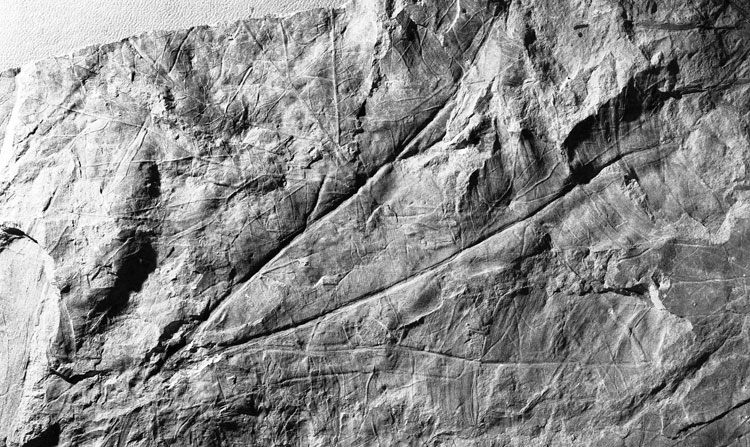Locality
Grebenka, Yelissev Locality, Herman and Shchepetov collection PF1 1007/35
Description
The following is taken from Spicer and Herman (1997)
Nilssoniocladus chukotensis Spicer et Herman, sp. nov.
1992 Nilssoniocladus sp. Shczepetov, Herman and Belaya plate 22, figs. 1 and 2.
Holotype: Collection No. PF 1, Specimen No. 1007/35-658, Plate III, figs. 1-4; Fig. 5. North-eastern Integrated Research Institute, Far Eastern Branch of the Russian Academy of Sciences, Magadan, Russia.
Type locality: the right bank of the Grebenka River (right tributary of the Anadyr' River) 4 km downstream of the mouth of the Malaya Grebenka River (lat. 64° 28'N; long. 168° 56'E) (Fig. 1C), North-eastern Russia.
Stratigraphic horizon: Krivorechenskaya Formation, upper subformation, latest Albian - early Cenomanian.
Etymology: the specific epithet is derived from the geographic name of Chukotka.
Diagnosis: Leaves attached to distal part of short shoot; short shoot 0.5 cm wide, 1.5 cm in length, with helically arranged leaf scars; leaf scars elliptic rhomboidal, up to 3.5 mm wide, up to 2.5 mm high; leaves assignable to Nilssonia serotina Heer.
Description: The only specimen described here is the holotype represented by a short shoot and three leaves of N. serotina (Plate III, figs. 1-3; Fig. 5A and B), two of which are attached to the distal part of the short shoot and the third one is oriented in such a way as to indicate possible original attachment. Leaves of the same form are abundant at the type locality. The leaves (Plate III, figs. 1 and 4, Figs. 4B and 5B) measure 13-17 cm in length and 4-5 cm wide and are frond-like with sparse dissection of the lamina. Pinnae are wide in relation to the gaps between them, their apices are rounded while the sinuses are acute to narrowly rounded. Venation is parallel to the sides of the pinnae. Pinnae are arranged in an alternate pattern in the basal part of the frond and are small and triangular. The base of the rachis or petiole is expanded to form a small bulbous shape (Fig. 4B).
Comparison with Nilssoniocladus nipponensis and N. alaskensis: Nilssoniocladus chukotensis differs from other species of the genus in the more elliptic form of the leaf scars and different foliage form.
Remarks
Figured in Shchepetov et al. (1992) Plate 22, Figs 1 and 2 (under the name of Nilssoniocladus sp.) and Spicer and Herman (1997).
